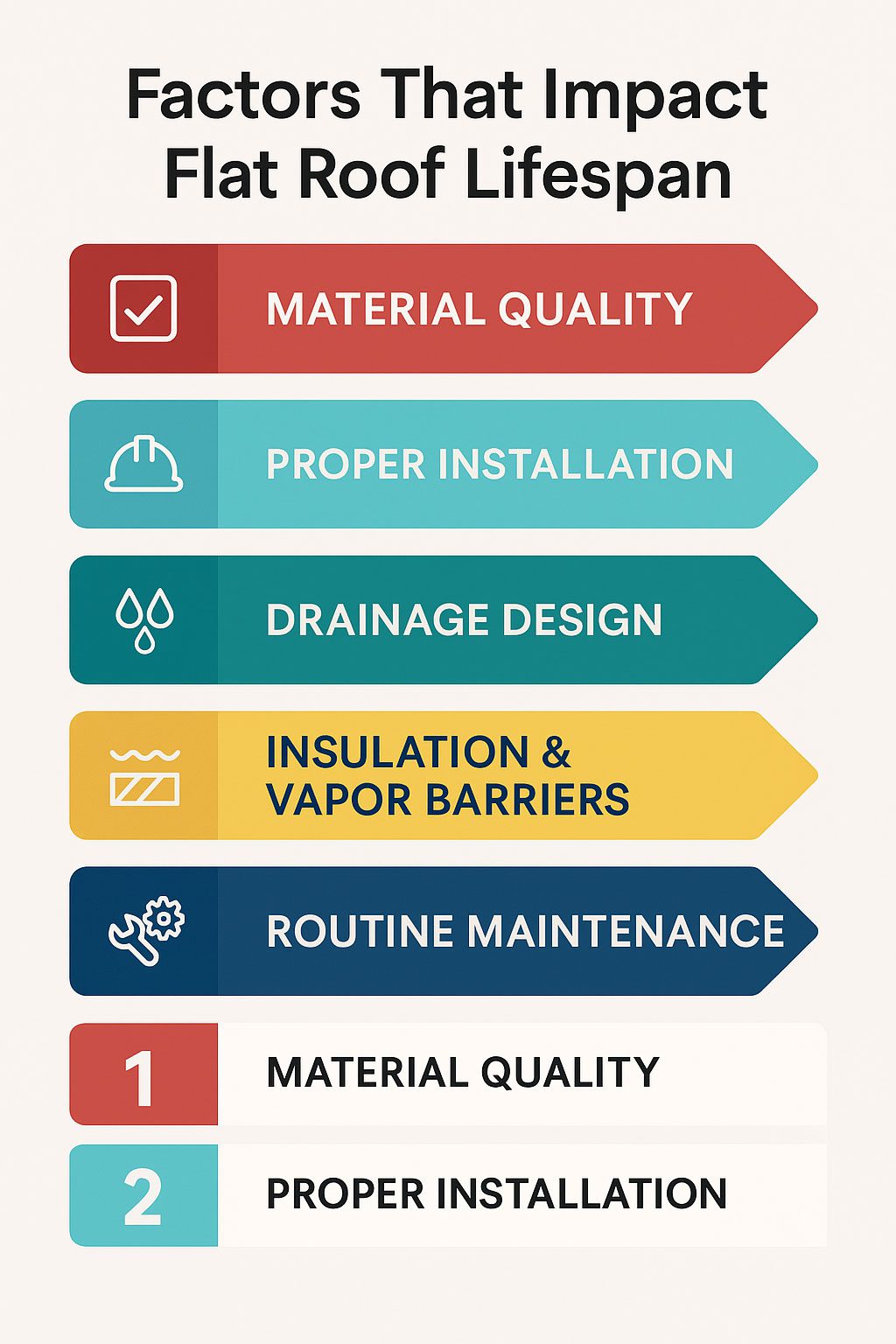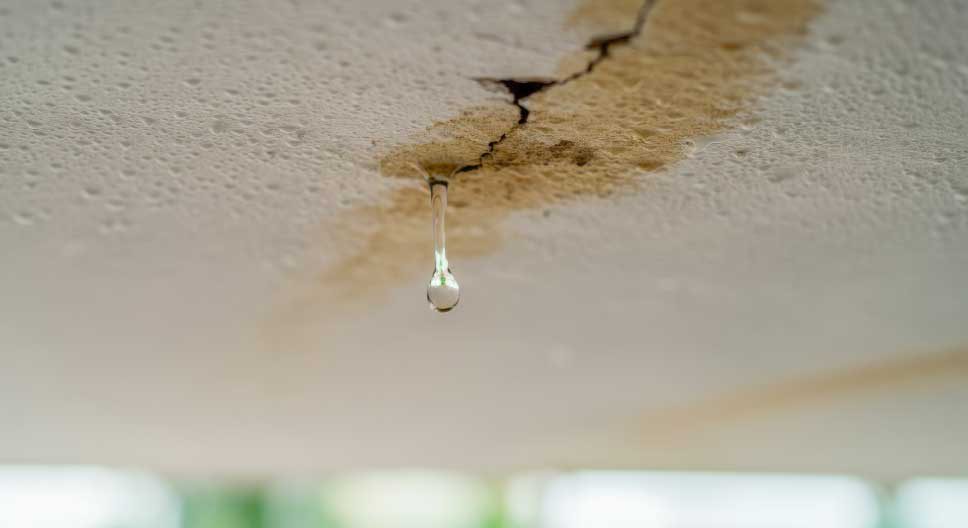If you own or manage a building with a flat roof, you know it’s an investment—one that should protect your property for decades when properly maintained. But one nagging question everyone in this position has likely had at some point is, how long does a flat roof really last in Ontario’s climate?
The answer: it depends on material type, installation, drainage, maintenance, and local conditions. Let’s break it down so you can understand what you have, what you may be looking at, and avoid costly surprises.
Typical Flat Roof Lifespans by Material
The lifespan of your flat roof largely depends on how well it was planned, installed, and maintained.
Why Planning Matters:
It’s important to keep in mind that partly due to lifespan, different materials are recommended for different applications. Since most options have a similar lifespan on their own, we have to consider the application we’re working with. For example, we won’t use EPDM above a restaurant because the grease will eat at the membrane.
Why Installation Matters:
This one should be pretty self-explanatory, but it’s worth repeating. An experienced, well trained and trusted flat roofing company is going to provide an installation that meets manufacturer expectations, and maximizes the life of their products.
Why Maintenance Matters:
Just like your vehicle, preventative and scheduled maintenance can greatly increase the lifespan of your flat roof when done properly by experienced flat roofer mechanics. If maintenance is not kept up with, the expected lifespan of your flat roof could be much lower than you think.
Common Flat Roof Materials & Lifespans
- EPDM Rubber Roof: Up to 20 years
- TPO Roof: Up to 20–30 years
- PVC Roof: Up to 20–30 years
- Modified Bitumen (ModBit): Up to 20–30 years
- Built-Up Roof (BUR): Up to 20–30 years
These ranges assume appropriate material selection for each project, proper installation and regular maintenance. Ontario’s snow, ice, and freeze-thaw cycles can shorten lifespan if drainage or insulation are neglected, and certain materials are used for certain projects for safety, durability and reliability reasons. Trust a company like Garcia Roofing to select, install and maintain the right roof for you.
How to Identify What Kind of Flat Roof You Have
The first step in determining how long your flat roof should last is a solid understanding of what kind of flat roof you have. Many building owners aren’t sure which flat roof type they own—especially in older buildings, so if you’re not sure, you are not alone.
Here’s how you can start:
- Check building documents: Your maintenance logs or building specs may list the system.
- Visual clues:
- EPDM is usually black rubbery sheets.
- TPO/PVC are white or light-colored and heat-welded at seams.
- ModBit or similar roofing typically has a granular surface, sometimes with seams sealed by torch or adhesive.
- BUR looks like layers of tar and gravel.
When in doubt, call a pro—especially before climbing onto a roof.

Factors That Can Impact Roof Lifespan
1. Material Quality
High-grade materials like thicker membranes or premium adhesives resist UV rays and temperature swings better.
2. Proper Installation
Poor workmanship causes premature leaks, ponding, or membrane separation. That’s why certified contractors like Garcia Roofing matter.
3. Drainage Design
Standing water degrades roofing faster. Proper slopes, drains, and scuppers are essential—especially with heavy Ontario snow melt.
4. Insulation & Vapor Barriers
Good insulation protects your membrane from stress caused by extreme temperature swings.
5. Routine Maintenance
Annual inspections, debris clearing, and minor repairs go a long way in preventing major issues.
How to Check Your Flat Roof for Signs of Trouble
DIY Inspection Tips
If it’s safe and accessible, here’s what to look for:

- Ponding Water: After rain, check for standing water that lasts more than 48 hours.
- Visible Blisters or Cracks: Look for bubbles under the membrane or splits along seams.
- Damaged Flashing: Check metal edges and seams for rust or separation.
- Interior Stains: Brown spots on ceilings or walls can mean hidden leaks.
- Moss or Vegetation: Indicates pooling water and trapped debris.
Why Hiring a Professional is the Smart Move
Flat roofs are tricky. Hidden leaks, poor drainage, and failing seams often go unnoticed until major damage appears.
A trusted local expert like Garcia Roofing:
- Knows Ontario’s weather conditions
- Understands the nuances of each flat roof system
- Uses safe inspection methods
- Spots early warning signs homeowners might miss
- Provides detailed maintenance plans to extend roof life
How Garcia Roofing Extends Flat Roof Lifespan
With over a decade of experience, we don’t just install roofs—we build systems that stand the test of time. Here’s how we help clients maximize their roof’s lifespan:
- Detailed inspections & condition reports
- Preventive maintenance plans
- Quality repairs using compatible materials
- Upgrades for insulation and drainage
- Transparent advice about when replacement is truly needed
Remember, at Garcia Roofing, we’re not just here for today—we’re here for tomorrow too.


